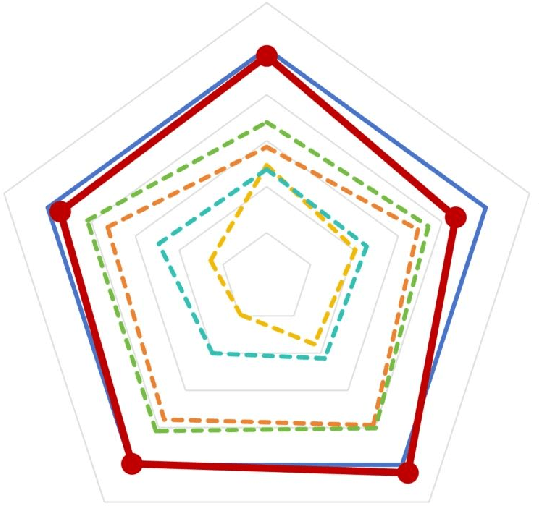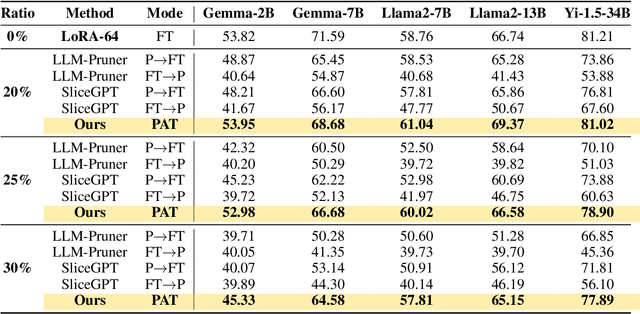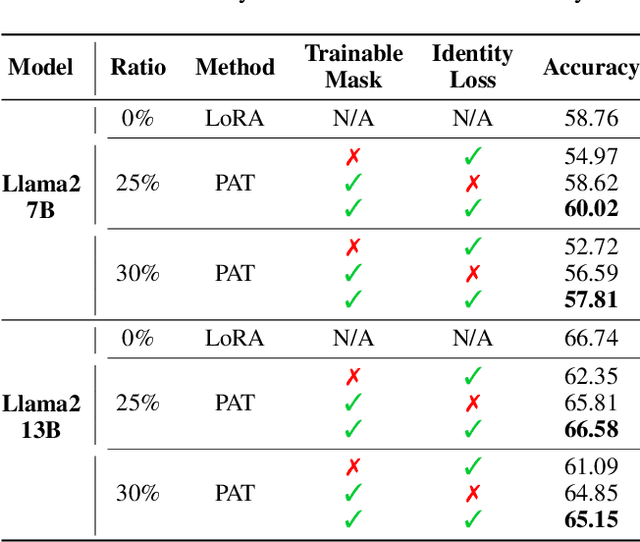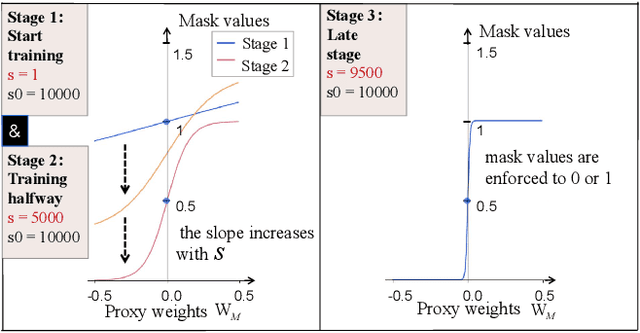Miao Wang
Sherman
Mono4DEditor: Text-Driven 4D Scene Editing from Monocular Video via Point-Level Localization of Language-Embedded Gaussians
Oct 10, 2025Abstract:Editing 4D scenes reconstructed from monocular videos based on text prompts is a valuable yet challenging task with broad applications in content creation and virtual environments. The key difficulty lies in achieving semantically precise edits in localized regions of complex, dynamic scenes, while preserving the integrity of unedited content. To address this, we introduce Mono4DEditor, a novel framework for flexible and accurate text-driven 4D scene editing. Our method augments 3D Gaussians with quantized CLIP features to form a language-embedded dynamic representation, enabling efficient semantic querying of arbitrary spatial regions. We further propose a two-stage point-level localization strategy that first selects candidate Gaussians via CLIP similarity and then refines their spatial extent to improve accuracy. Finally, targeted edits are performed on localized regions using a diffusion-based video editing model, with flow and scribble guidance ensuring spatial fidelity and temporal coherence. Extensive experiments demonstrate that Mono4DEditor enables high-quality, text-driven edits across diverse scenes and object types, while preserving the appearance and geometry of unedited areas and surpassing prior approaches in both flexibility and visual fidelity.
YUNet: Improved YOLOv11 Network for Skyline Detection
Feb 18, 2025Abstract:Skyline detection plays an important role in geolocalizaion, flight control, visual navigation, port security, etc. The appearance of the sky and non-sky areas are variable, because of different weather or illumination environment, which brings challenges to skyline detection. In this research, we proposed the YUNet algorithm, which improved the YOLOv11 architecture to segment the sky region and extract the skyline in complicated and variable circumstances. To improve the ability of multi-scale and large range contextual feature fusion, the YOLOv11 architecture is extended as an UNet-like architecture, consisting of an encoder, neck and decoder submodule. The encoder extracts the multi-scale features from the given images. The neck makes fusion of these multi-scale features. The decoder applies the fused features to complete the prediction rebuilding. To validate the proposed approach, the YUNet was tested on Skyfinder and CH1 datasets for segmentation and skyline detection respectively. Our test shows that the IoU of YUnet segmentation can reach 0.9858, and the average error of YUnet skyline detection is just 1.36 pixels. The implementation is published at https://github.com/kuazhangxiaoai/SkylineDet-YOLOv11Seg.git.
Maximizing User Connectivity in AI-Enabled Multi-UAV Networks: A Distributed Strategy Generalized to Arbitrary User Distributions
Nov 07, 2024



Abstract:Deep reinforcement learning (DRL) has been extensively applied to Multi-Unmanned Aerial Vehicle (UAV) network (MUN) to effectively enable real-time adaptation to complex, time-varying environments. Nevertheless, most of the existing works assume a stationary user distribution (UD) or a dynamic one with predicted patterns. Such considerations may make the UD-specific strategies insufficient when a MUN is deployed in unknown environments. To this end, this paper investigates distributed user connectivity maximization problem in a MUN with generalization to arbitrary UDs. Specifically, the problem is first formulated into a time-coupled combinatorial nonlinear non-convex optimization with arbitrary underlying UDs. To make the optimization tractable, a multi-agent CNN-enhanced deep Q learning (MA-CDQL) algorithm is proposed. The algorithm integrates a ResNet-based CNN to the policy network to analyze the input UD in real time and obtain optimal decisions based on the extracted high-level UD features. To improve the learning efficiency and avoid local optimums, a heatmap algorithm is developed to transform the raw UD to a continuous density map. The map will be part of the true input to the policy network. Simulations are conducted to demonstrate the efficacy of UD heatmaps and the proposed algorithm in maximizing user connectivity as compared to K-means methods.
Learning with Dynamics: Autonomous Regulation of UAV Based Communication Networks with Dynamic UAV Crew
Sep 25, 2024Abstract:Unmanned Aerial Vehicle (UAV) based communication networks (UCNs) are a key component in future mobile networking. To handle the dynamic environments in UCNs, reinforcement learning (RL) has been a promising solution attributed to its strong capability of adaptive decision-making free of the environment models. However, most existing RL-based research focus on control strategy design assuming a fixed set of UAVs. Few works have investigated how UCNs should be adaptively regulated when the serving UAVs change dynamically. This article discusses RL-based strategy design for adaptive UCN regulation given a dynamic UAV set, addressing both reactive strategies in general UCNs and proactive strategies in solar-powered UCNs. An overview of the UCN and the RL framework is first provided. Potential research directions with key challenges and possible solutions are then elaborated. Some of our recent works are presented as case studies to inspire innovative ways to handle dynamic UAV crew with different RL algorithms.
PAT: Pruning-Aware Tuning for Large Language Models
Aug 27, 2024



Abstract:Large language models (LLMs) excel in language tasks, especially with supervised fine-tuning after pre-training. However, their substantial memory and computational requirements hinder practical applications. Structural pruning, which reduces less significant weight dimensions, is one solution. Yet, traditional post-hoc pruning often leads to significant performance loss, with limited recovery from further fine-tuning due to reduced capacity. Since the model fine-tuning refines the general and chaotic knowledge in pre-trained models, we aim to incorporate structural pruning with the fine-tuning, and propose the Pruning-Aware Tuning (PAT) paradigm to eliminate model redundancy while preserving the model performance to the maximum extend. Specifically, we insert the innovative Hybrid Sparsification Modules (HSMs) between the Attention and FFN components to accordingly sparsify the upstream and downstream linear modules. The HSM comprises a lightweight operator and a globally shared trainable mask. The lightweight operator maintains a training overhead comparable to that of LoRA, while the trainable mask unifies the channels to be sparsified, ensuring structural pruning. Additionally, we propose the Identity Loss which decouples the transformation and scaling properties of the HSMs to enhance training robustness. Extensive experiments demonstrate that PAT excels in both performance and efficiency. For example, our Llama2-7b model with a 25\% pruning ratio achieves 1.33$\times$ speedup while outperforming the LoRA-finetuned model by up to 1.26\% in accuracy with a similar training cost. Code: https://github.com/kriskrisliu/PAT_Pruning-Aware-Tuning
Language Embedded 3D Gaussians for Open-Vocabulary Scene Understanding
Nov 30, 2023



Abstract:Open-vocabulary querying in 3D space is challenging but essential for scene understanding tasks such as object localization and segmentation. Language-embedded scene representations have made progress by incorporating language features into 3D spaces. However, their efficacy heavily depends on neural networks that are resource-intensive in training and rendering. Although recent 3D Gaussians offer efficient and high-quality novel view synthesis, directly embedding language features in them leads to prohibitive memory usage and decreased performance. In this work, we introduce Language Embedded 3D Gaussians, a novel scene representation for open-vocabulary query tasks. Instead of embedding high-dimensional raw semantic features on 3D Gaussians, we propose a dedicated quantization scheme that drastically alleviates the memory requirement, and a novel embedding procedure that achieves smoother yet high accuracy query, countering the multi-view feature inconsistencies and the high-frequency inductive bias in point-based representations. Our comprehensive experiments show that our representation achieves the best visual quality and language querying accuracy across current language-embedded representations, while maintaining real-time rendering frame rates on a single desktop GPU.
BakedAvatar: Baking Neural Fields for Real-Time Head Avatar Synthesis
Nov 28, 2023Abstract:Synthesizing photorealistic 4D human head avatars from videos is essential for VR/AR, telepresence, and video game applications. Although existing Neural Radiance Fields (NeRF)-based methods achieve high-fidelity results, the computational expense limits their use in real-time applications. To overcome this limitation, we introduce BakedAvatar, a novel representation for real-time neural head avatar synthesis, deployable in a standard polygon rasterization pipeline. Our approach extracts deformable multi-layer meshes from learned isosurfaces of the head and computes expression-, pose-, and view-dependent appearances that can be baked into static textures for efficient rasterization. We thus propose a three-stage pipeline for neural head avatar synthesis, which includes learning continuous deformation, manifold, and radiance fields, extracting layered meshes and textures, and fine-tuning texture details with differential rasterization. Experimental results demonstrate that our representation generates synthesis results of comparable quality to other state-of-the-art methods while significantly reducing the inference time required. We further showcase various head avatar synthesis results from monocular videos, including view synthesis, face reenactment, expression editing, and pose editing, all at interactive frame rates.
* ACM Transactions on Graphics (SIGGRAPH Asia 2023). Project Page: https://buaavrcg.github.io/BakedAvatar
PaintNeSF: Artistic Creation of Stylized Scenes with Vectorized 3D Strokes
Nov 27, 2023Abstract:We present Paint Neural Stroke Field (PaintNeSF), a novel technique to generate stylized images of a 3D scene at arbitrary novel views from multi-view 2D images. Different from existing methods which apply stylization to trained neural radiance fields at the voxel level, our approach draws inspiration from image-to-painting methods, simulating the progressive painting process of human artwork with vector strokes. We develop a palette of stylized 3D strokes from basic primitives and splines, and consider the 3D scene stylization task as a multi-view reconstruction process based on these 3D stroke primitives. Instead of directly searching for the parameters of these 3D strokes, which would be too costly, we introduce a differentiable renderer that allows optimizing stroke parameters using gradient descent, and propose a training scheme to alleviate the vanishing gradient issue. The extensive evaluation demonstrates that our approach effectively synthesizes 3D scenes with significant geometric and aesthetic stylization while maintaining a consistent appearance across different views. Our method can be further integrated with style loss and image-text contrastive models to extend its applications, including color transfer and text-driven 3D scene drawing.
Towards Vehicle-to-everything Autonomous Driving: A Survey on Collaborative Perception
Aug 31, 2023



Abstract:Vehicle-to-everything (V2X) autonomous driving opens up a promising direction for developing a new generation of intelligent transportation systems. Collaborative perception (CP) as an essential component to achieve V2X can overcome the inherent limitations of individual perception, including occlusion and long-range perception. In this survey, we provide a comprehensive review of CP methods for V2X scenarios, bringing a profound and in-depth understanding to the community. Specifically, we first introduce the architecture and workflow of typical V2X systems, which affords a broader perspective to understand the entire V2X system and the role of CP within it. Then, we thoroughly summarize and analyze existing V2X perception datasets and CP methods. Particularly, we introduce numerous CP methods from various crucial perspectives, including collaboration stages, roadside sensors placement, latency compensation, performance-bandwidth trade-off, attack/defense, pose alignment, etc. Moreover, we conduct extensive experimental analyses to compare and examine current CP methods, revealing some essential and unexplored insights. Specifically, we analyze the performance changes of different methods under different bandwidths, providing a deep insight into the performance-bandwidth trade-off issue. Also, we examine methods under different LiDAR ranges. To study the model robustness, we further investigate the effects of various simulated real-world noises on the performance of different CP methods, covering communication latency, lossy communication, localization errors, and mixed noises. In addition, we look into the sim-to-real generalization ability of existing CP methods. At last, we thoroughly discuss issues and challenges, highlighting promising directions for future efforts. Our codes for experimental analysis will be public at https://github.com/memberRE/Collaborative-Perception.
TableGPT: Towards Unifying Tables, Nature Language and Commands into One GPT
Aug 07, 2023



Abstract:Tables are prevalent in real-world databases, requiring significant time and effort for humans to analyze and manipulate. The advancements in large language models (LLMs) have made it possible to interact with tables using natural language input, bringing this capability closer to reality. In this paper, we present TableGPT, a unified fine-tuned framework that enables LLMs to understand and operate on tables using external functional commands. It introduces the capability to seamlessly interact with tables, enabling a wide range of functionalities such as question answering, data manipulation (e.g., insert, delete, query, and modify operations), data visualization, analysis report generation, and automated prediction. TableGPT aims to provide convenience and accessibility to users by empowering them to effortlessly leverage tabular data. At the core of TableGPT lies the novel concept of global tabular representations, which empowers LLMs to gain a comprehensive understanding of the entire table beyond meta-information. By jointly training LLMs on both table and text modalities, TableGPT achieves a deep understanding of tabular data and the ability to perform complex operations on tables through chain-of-command instructions. Importantly, TableGPT offers the advantage of being a self-contained system rather than relying on external API interfaces. Moreover, it supports efficient data process flow, query rejection (when appropriate) and private deployment, enabling faster domain data fine-tuning and ensuring data privacy, which enhances the framework's adaptability to specific use cases.
 Add to Chrome
Add to Chrome Add to Firefox
Add to Firefox Add to Edge
Add to Edge